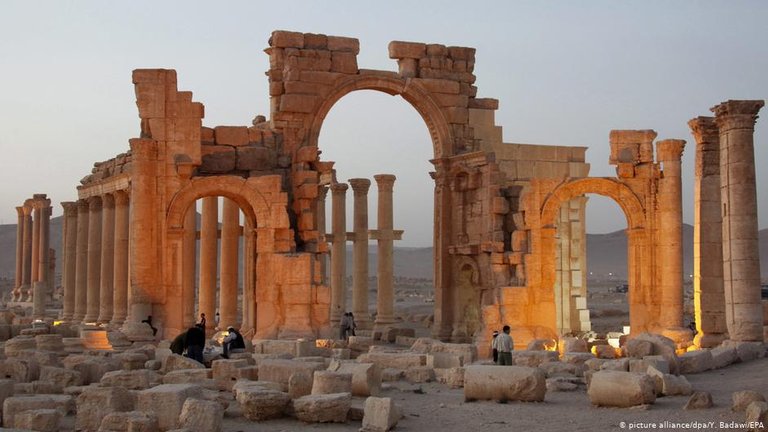
Palmyra (Palmyra) is an ancient city of great historical importance, currently located in the province of Homs in the central part of the State of Syria. The ancient city dates back to the Neolithic period and was mentioned in the historical records - for the first time - in the second millennium BC, and was then passed by several ruling states until it ended under the authority of the Roman Empire in the first century AD. A large city was richly enriched by its location, which was located at the intersection of several commercial routes in the ancient world. The Tadmorians were famous for many cities built on the Silk Road, one of the most important ancient trade routes (which extended from China westward to Europe to the east), and their commercial relations with the Roman Empire. Their profits have enabled them to build enormous buildings in the city of Palmyra, such as the great Palmyra Kolunad, the Temple of Belle, and tombs in the form of towers. The ethnic Tigers were a mixture of Amorites, Aramaeans and Arabs. They believed that the Aramaic dialect of Aramaic was an Aramaic dialect. They also used the Greek language in their commercial and political deliberations. They converted to many pagan religions, including the higher religions, Mesopotamian religions and ancient Arab religions. The social system of the city was based on tribal and tribal rule, and its culture was greatly influenced by the Greco-Roman world, as its architectural and artistic style combined Roman and Greek patterns with Oriental artistic styles. By the third century AD, Palmyra had become a regional center at the height of its prosperity in 260 AD, when its king defeated Aashena against the Sassanid Emperor Sabor I. After his death he was succeeded by Queen Zenobia, who did not want Palmyra to remain under Roman rule, and they were expelled from the city and established the independent kingdom of Palmyra. However, this angered the Roman Emperor Aurelian, mobilized an army and destroyed the city in 273. Emperor Diocletian rebuilt Palmyra, but it was no longer its pre-eminence and prosperity. Regional changes in the region led to the conversion of the city's population to the Christian religion in the fourth century AD, and then to Islam in the seventh century, as the Islamic conquests led to the solution of the Arabic language the place of the Roman and Greek languages. In 273, the city of Palmyra gained autonomy and was administratively annexed to the Romanian state of Syria. This was the result of the establishment of an independent political system in the city, influenced by the success of independent Greek cities. In the third century, Palmyra was converted into a Roman cavity (Roman cologne) and was then administered according to a monarchy in 260 CE. But after its destruction in 273 CE, it was no longer a small administrative center in the Byzantine Empire, and lost most of its importance. The city was destroyed again in 1400 by the Timorese invasion, shrinking into a small village, but it remained inhabited. After the advent of the mandate, the French rulers decided to move the entire population in 1932 to the modern city of Palmyra, making the site of the archaeological city available for exploration and exploration. The Islamic State of Iraq and the Shamm (Da'ash) seized the city of Palmyra in 2015 and since then the city has been the site of a continuous war between the Islamic state and the Syrian army (which regained the city on 2 March 2017). The war and the actions of the members of the Islamic State Organization led to the destruction or destruction of a large number of valuable buildings and artifacts in Palmyra, whose cultural heritage remains at great risk.
Please give me a follow and I will give you a follow in return and possible future votes!
Thank you in advance!✅ @besoo78, I gave you an upvote on your post!
i live there 3>